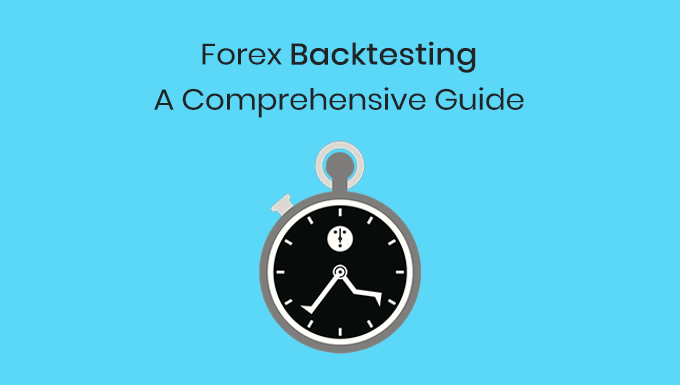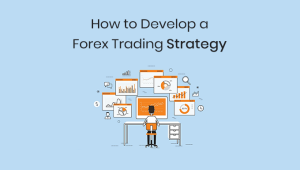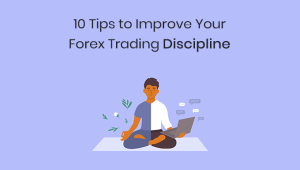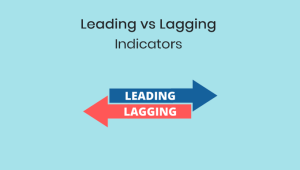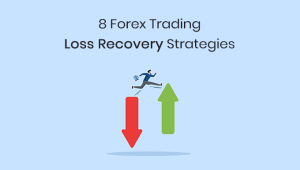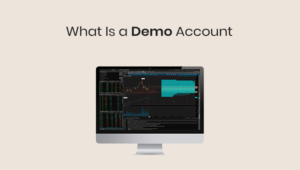Forex backtesting is a critical process for traders who want to develop and refine their trading strategies. To maximize your chances of success and minimize losses, it’s crucial to test and optimize your forex strategies before implementing them in the live market. In this comprehensive guide, we will explore what is backtesting in forex trading, why it’s essential for forex traders, the various forex backtesting software tools, how to backtest a forex strategy, and the advantages and disadvantages of backtesting. We will also discuss how to evaluate backtest results to refine your forex strategies for optimal performance.
What is Backtesting in Forex Trading?
Backtesting is a method used by forex traders to evaluate and optimize their trading strategies by simulating their performance using historical data. It involves creating a set of rules for entering and exiting trades, and then applying these rules to a dataset of historical price data to see how the strategy would have performed during that time.
The primary purpose of forex backtesting is to determine the effectiveness of a trading strategy before committing real money to it in the live market. By simulating the past, traders can gain valuable insights into the potential profitability, risk, and consistency of their trading approach, and make any necessary adjustments before putting it into practice.
Why Backtest a Forex Strategy?
Backtesting offers several benefits:
- Identify strengths and weaknesses: Backtesting can help you uncover the strengths and weaknesses of your trading strategy, allowing you to make any necessary adjustments before risking real money in the live market.
- Improve consistency: Consistency is crucial for long-term success in forex trading. Backtesting enables you to assess the consistency of your strategy, helping you avoid erratic trading results.
- Mitigate risk: By analyzing the historical performance of your trading strategy, you can identify potential risk factors and implement effective risk management techniques to minimize losses.
- Enhance confidence: Knowing that your trading strategy has been tested extensively and proven effective in the past can boost your confidence when trading in the live market.
- Save time and money: Testing your trading strategy using historical data can save you time and money by preventing costly trading mistakes in the live market.
Forex Backtesting Software Tools
There are several software tools available for backtesting forex strategies, ranging from simple to complex. Some popular options include:
1. MetaTrader 4 and 5
MT4 and MT5 platforms are widely used by forex traders and offer built-in strategy testing functionality. The Strategy Tester in MetaTrader allows you to backtest strategies using historical data and visualize the results.
2. Forex Tester
Forex Tester is a standalone software specifically designed for backtesting forex strategies. It offers a user-friendly interface and advanced analytical tools to help traders evaluate their strategies in detail.
3. Trading View
Trading View is a web-based platform that provides charting tools, historical data, and a scripting language called Pine Script, which allows traders to create custom indicators and backtest strategies.
4. Ninja Trader
Ninja Trader is a trading platform that offers advanced backtesting capabilities through its Strategy Analyzer feature. It allows for the testing of both automated and discretionary trading strategies, as well as optimization and stress testing.
5. QuantConnect
Quant Connect is a cloud-based algorithmic trading platform that provides a wide range of historical data and backtesting capabilities. It supports multiple programming languages, including C#, Python, and F#, enabling traders to develop, test, and optimize their trading strategies.
4. How to Backtest a Forex Strategy?
To backtest a forex strategy effectively, follow these steps:
Step 1: Define the Trading Strategy
The first step in backtesting a trading strategy is to define the strategy. This includes identifying the entry and exit rules, as well as any stop loss or take profit levels. Traders should also consider any other factors that may affect the strategy, such as market conditions or news events.
Example of a Trading Strategy
• Entry Signal: Buy when a 20-period moving average (MA) crosses above the 50-period MA.
• Exit Signal: Sell when the 20-period MA crosses below the 50-period MA.
• Stop-Loss: Set at 50 pips below the entry price.
• Take-Profit: Set at 100 pips above the entry price.
Step 2: Gather Historical Data
The next step is to gather historical data for the market that the strategy will be applied to. This data should include price data as well as any other relevant information, such as trading volume or economic indicators. Traders can obtain historical data from a variety of sources, including online databases or trading platforms.
Step 3: Set Up the Backtesting Software
Once the historical data has been gathered, traders need to set up the backtesting software. There are many different backtesting software options available, ranging from simple spreadsheet programs to sophisticated algorithmic trading platforms. Traders should choose a software that is appropriate for their level of experience and the complexity of their strategy.
Step 4: Run the Backtest
With the software set up, traders can now run the backtest. This involves applying the trading strategy to the historical data and analyzing the results. Traders should pay close attention to key performance metrics, such as the win rate, average profit/loss, and drawdown. These metrics can help traders evaluate the performance of the strategy and identify any areas that need improvement.
Step 5: Analyze the Results
Once the backtest is complete, traders should analyze the results. This involves reviewing the performance metrics and identifying any areas that need improvement. Traders should also consider how the strategy performed during different market conditions and look for patterns or trends that can help them make better trading decisions in the future.
How to Backtest an EA in MT4
1. Open the MT4 platform and select the strategy tester from the ‘View’ menu or by using the shortcut key ‘Ctrl+R’.
2. Select the Expert Advisor (EA) you want to backtest from the dropdown menu in the strategy tester window.
3. Choose the currency pair and the timeframe (e.g., M1, M15, H1, etc.) you want to test your strategy on.
4. Select the backtesting period by setting the start and end date.
5. Choose the modeling quality you want to use for your backtest. The higher the modeling quality, the more accurate your backtest will be, but it will also take longer to complete.
6. Choose the backtesting method you want to use. There are three methods available: every tick (the most accurate but the slowest), control points (less accurate but faster), and open prices (the fastest but least accurate).
7. Set the initial deposit, the lot size, and any other parameters for your backtest.
8. Click on the ‘Start’ button to start the backtest.
9. Wait for the backtest to complete. Once it’s done, you can view the results in the the “Results,” “Graph,” “Report,” and “Journal” tabs.
10. Analyze the results to evaluate your strategy’s performance. Pay close attention to key metrics, such as total net profit, drawdown, profit factor, and win rate.
How Important is Backtesting in Forex: Pros and Cons
Advantages of Forex Backtesting
- Objective assessment: Backtesting provides an objective way to evaluate the performance of a trading strategy, reducing the influence of emotions and biases.
- Strategy optimization: Backtesting allows you to fine-tune your trading strategy by identifying areas for improvement and making necessary adjustments.
- Risk management: By analyzing historical performance, you can better understand the potential risks associated with your strategy and implement effective risk management techniques.
- Cost-effective: Backtesting can save you time and money by identifying ineffective strategies before committing real capital in the live market.
Disadvantages of Forex Backtesting
- Overfitting: A common drawback in backtesting is overfitting, which occurs when a strategy is optimized to perform well on historical data but may not perform well in the live market due to changing conditions.
- Limitations of historical data: Backtesting relies on historical data, which may not always be a perfect representation of future market conditions.
- Data quality: The accuracy and reliability of backtesting results depend heavily on the quality of the historical data used. Poor-quality data can lead to misleading results.
- Execution differences: Backtesting results may not always accurately reflect real-world trading due to factors such as slippage and latency, which can impact trade execution.
Evaluating Forex Backtest Results
When evaluating the results of a forex backtest, consider the following key performance metrics:
1. Profitability: Assess the net profit or loss generated by the strategy during the backtesting period. This will help you determine whether the strategy has the potential to be profitable in the live market.
2. Drawdown: Examine the maximum drawdown, which represents the largest peak-to-trough decline in your account’s balance during the backtesting period. This metric provides insight into the risk associated with the strategy.
3. Win rate: Calculate the percentage of winning trades relative to the total number of trades. A high win rate can be an indicator of a consistent and reliable strategy.
4. Risk-to-reward ratio: Analyze the average profit per winning trade compared to the average loss per losing trade. A favorable risk-to-reward ratio is essential for long-term trading success.
5. Sharpe ratio: The Sharpe ratio measures the risk-adjusted return of a trading strategy. A higher Sharpe ratio indicates a better risk-adjusted performance.
6. Stability and robustness: Assess the stability of the strategy’s performance across various market conditions and timeframes. A robust strategy should perform consistently under different circumstances.
7. Out-of-sample testing: To avoid overfitting, perform out-of-sample testing by evaluating your strategy on a separate dataset that was not used during the optimization process.
Conclusion
Forex backtesting is a crucial step in the development of successful trading strategies. By simulating the performance of your trading strategy using historical data, you can gain valuable insights into its potential profitability, risk, and consistency. This comprehensive guide has covered the key aspects of forex backtesting, including software tools, the backtesting process, and evaluating results. By mastering these concepts and applying them to your forex trading journey, you will be well-equipped to refine your strategies for optimal performance and minimize risks in the live market.
FAQs
Q: What is forex backtesting?
A: Back testing is the process of evaluating a trading strategy using historical data to see how it would have performed under different market conditions.
Q: Why is forex backtesting important?
A: Back testing helps traders to identify the strengths and weaknesses of their strategy and make improvements accordingly. It can also help traders to develop confidence in their strategy.
Q: What kind of data do I need for backtesting?
A: You need historical data for the currency pair you will be testing the strategy on, including open, high, low, and close prices for each candlestick.
Q: What software can I use for backtesting a forex strategy?
A: There are many different back testing software options available, including MetaTrader, TradingView, and NinjaTrader.
Q: Can backtesting guarantee success in forex trading?
A: No, back testing cannot guarantee success in forex trading. It is just one tool to help traders evaluate the effectiveness of their strategy.
Q: How often should I backtest my forex strategy?
A: It is recommended to back test your forex strategy regularly, at least once a year or whenever you make significant changes to your strategy.
